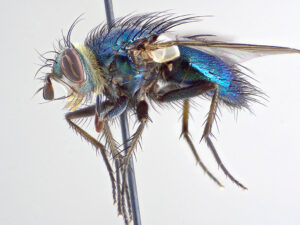Assessing rarity
 One of the first questions I am normally asked when someone catches something unusual is “how rare is it?” This might seem a fairly easy question to ask, considering that I get to see a lot of the data on tachinids and we have experience gleaned from the scheme and from our knowledge of museum collections. However, a lot of the species on our national list are very “data-deficient” and we just haven’t got enough information on their status to make a good judgement.
One of the first questions I am normally asked when someone catches something unusual is “how rare is it?” This might seem a fairly easy question to ask, considering that I get to see a lot of the data on tachinids and we have experience gleaned from the scheme and from our knowledge of museum collections. However, a lot of the species on our national list are very “data-deficient” and we just haven’t got enough information on their status to make a good judgement.
There are very common species (e.g. Tachina fera or Eriothrix rufomaculata) but there are far more that seem to exist in very small but stable populations (e.g. Germaria angustata, Xylotachina diluta & Chrysosomopsis aurata) or that have a very random, scattered distribution (e.g. Catharosia pygmaea, Lophosia fasciata or Paracraspedothrix montivaga).
The latter pattern might suggest that they are fairly common but are seldom encountered because their ecology or behaviour means that they are under recorded. Small, inconspicuous species that seldom nectar at tall flowers but prefer to skulk in the undergrowth or fly at times when collectors are not usually in the field. Alternatively they might genuinely move around a lot and manage to survive in low numbers. But whatever the reason these species are very hard to assign a meaningful status to.
Genera like Germaria, Chrysosomopsis and Xylotachina appear to have very specific requirements of either their habitat or their hosts. Germaria angustata live right across the northern hemisphere, from the coasts of the North Sea & Baltic, to Siberia in Russia and the Yukon in Canada – but always on sand dune systems, where they presumably live on a host that feeds on the roots of marram grasses. Xylotachina‘s host is the Goat Moth, which is a species that seems to have ‘favourite’ Oak trees – seldom spreading far from their tree. Consequently Xylotachina lives close to those trees and they don’t roam far.
So, what does this mean for assessing rarity and what sort of status should we assign to uncommon species? Your chances of seeing Chrysosomopsis or Germaria are obviously very slim indeed, unless you go to their favourite localities at the right time of year … but if you do go then your chances are high. Equally, if you go hunting for Catharosia then you might walk past dozens of them, until you get a sweep net and start bashing downland herbage. There is no reason to assume that any of these species are actually ‘at risk’ though … unless a fire of flood wipes out the ecosystem on which they rely.
So, if we assign a status then what do they mean exactly? Here are a few unscientific examples of rarity, as I might mean them:
- very rare: widely scattered records across a fairly wide area of the country but seldom taken – e.g. years where none are recorded
- rare: widely scattered records across a fairly wide area of the country but only taken a few times in a year at most
- uncommon: records taken across a fairly wide area of the country – a few people usually catch a few individuals each year
- infrequent: records taken across a fairly wide area of the country – seen regularly but never commonly
- very local: only a few known sites but fairly easy to see if you visit at the right time of year
- local: confined to specific habitats but not uncommon where they occur
- common: found fairly ubiquitously across a large swathe of the country and not restricted to a specific habitat
- very common: ubiquitous – you are very likely to find one if you go to any decent habitat
As you can see they take a bit of explaining so I tend to qualify rarity when I am asked for it, otherwise the result is fairly meaningless.
To our knowledge there are no species of tachinid that are actually at imminent risk of extinction – if we allow for the fact that some have very rare hosts or very small distributions that would naturally make them more vulnerable than a species with a common host or a large population.